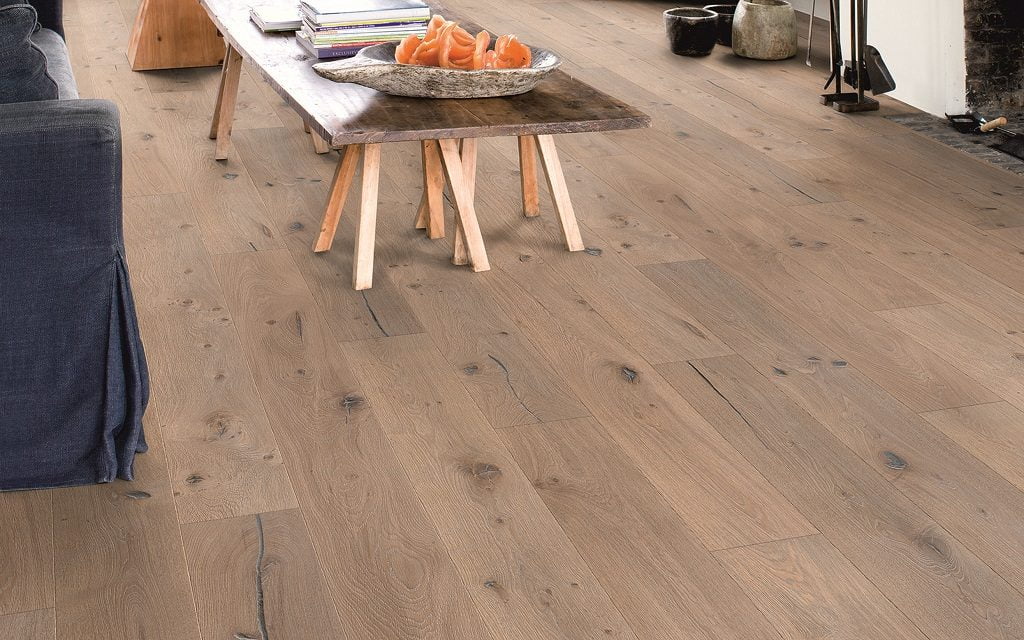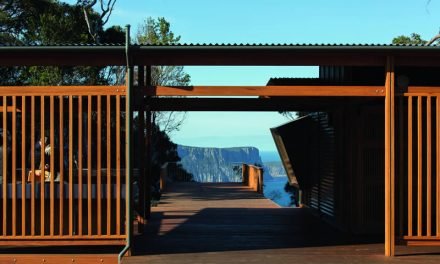Gerry Swindale, President of the National Wood Flooring Association of Australia (NWFAA), has expressed concern over a significant increase in wood floor failures.
“Since the withdrawal of licensing from our industry in NSW by the former government in 1999, there has been a significant increase in the number of building disputes involving the installation of wood floors,” he says. “I have seen many proud home owners reduced to tears by both incompetent and/or unscrupulous operators.”
The NWFAA is often engaged to prepare detailed technical reports, both on floor failures and on unconventional methods of construction. Since the withdrawal of licensing in NSW, unskilled and untrained operators are increasingly getting away with more radical departures from good trade practice.
“We live in an age where everybody wants everything quickly and cheaply, but when it comes to a quality wood floor, the adage that ‘you get what you pay for’, has never been truer,” Gerry says. “Consumers need to be aware that there are many things unscrupulous contractors can do to cheat a client, and most of these things will not be apparent at the initial time of handover.”
Below is a list of common problems that have arisen in legal disputes over wood flooring.
- Quoted “select” grade but supplied as a substantially lesser grade, or as a mix of various lesser grades, as a means of the contractor reducing his costs.
- To enable a contractor to offer a “cheaper” price to secure the job, by “dudding” the client in product quality.
- Floors installed with water emulsified adhesives (PVA) rather than Waterproof Polyurethane Adhesives, can be a difference of $10.00 – $12.00m2, saving to the contractor).
- Use of adhesive in “a-little-dab-will-do” fashion, rather than full trowel bed of adhesive, will save a contractor plenty, but might cost you, your entire floor
- Installation of wood floors without checking that the sub floor levels conform with the minimum requirements of the Building Code of Australia. (Maximum deviation of 3mm anywhere under a 3 metre straightedge).
- Installation of floors over uneven sub floors (with no provision for adjusting sub floor levels).
- Installation of wood floors over sub floors “unchecked” for Moisture Content.
- Installation of floors over unventilated or poorly ventilated sub floors, leading to floor failure.
- Installation of acoustical floors using non-approved acoustical membranes.
- Installation of acoustical floors with major sections of concrete sub floors fully exposed and not covered by the required acoustical membranes causing failure of Acoustical Test Results and legal removal of “unacceptable” flooring system.
- Failure to provide sufficient perimeter expansion, particularly at transition to tiles/bathroom, etc.
- Failure to provide adequate internal expansion within floor construction as required.
- Use of polyurethane coatings leading to floors being torn-apart due to edge bonding phenomenon.
- Poor sanding and finishing practices that fail to cut the floor “flat” prior to finishing processes.
- Installation of wood floors in areas “below grade” where ineffective drainage/waterproofing lead to wood floor failures.
- Serious failures to recognise that all timber floors installed in high humidity areas must provide for greater floor movement, and contractors must know and fully comprehend the specific procedures that must be incorporated within such floor construction.
Substitution of species
Consumers and contractors should be aware that timber grown in both South/East Asia and Africa with seeds sown from Australian Native hardwoods – intended for use as pulp wood for paper production – is currently being passed off as if it was a native Australian hardwood species.
“People should be aware that the soils and conditions under which timber grows can significantly impact the characteristics and performance of that timber, especially when harvested from young immature trees, instead of large, old and mature lumber, drawn from well managed forests,” Gerry says.
“Timber grown for pulp wood comes from forests that are not managed by way of ‘thinning’ to remove the branches, etc. Subsequently, when attempts are made to convert such timber into sawn timber, there is a significant presence of knots and sapwood as, generally speaking, these trees are being harvested at comparatively a very young age.”
Species which appear to be dominating this substitution include Spotted Gum, East Coast Blackbutt, Jarrah and Sydney Blue Gum.
Certain imported species contain Lyctus susceptible sapwood. which is required to be specifically treated against Lyctus borer attack before being imported into Australia.
“Wisdom suggests that if you are the contractor who installs imported materials which are not treated, this could prove to be a very costly error of judgement for you,” Gerry says.
“Consumers and specifiers who expect to be buying Australian native timbers and supporting the Australian economy are encouraged to ensure that all contract documents clearly specify genuine Australian native hardwood species.
Responsibilities of a wood floor contractor
When consumers engage contractors, who hold themselves out to be a wood floor contractor, it’s entirely reasonable for them to expect that such a contractor is knowledgeable about the industry and aware of their responsibilities.
Wood floor contractors must be aware that in contracting the installation of wood floor works, it’s their responsibility to ensure the following:
- That the products that they are installing are “fit for purpose”. (A quality product that will deliver what is claimed).
- That the site upon which products are being installed, is a suitable site to be installing wood floors (drainage/sub floor ventilation/below grade installation.
- Own and know how to operate and record all necessary site information before commencement of works:
- Concrete moisture meter
- Timber moisture meter
- Specie correction tables (both “corrected and “uncorrected meter readings) should be record.
- Know and be able to identify timber species
- Understand and be able to advise on “hardness ratings” of timber species
- Know, understand, and be able to advise on potential sanding and coating problems “typically” inherent in certain timber species, (oils, rejection etc.,)
- Own and use a 3 metre straight-edge to “check” the acceptability of a sub floor for “planeness and tolerance” prior to commencement of floor installation works.
- Test the surface of the sub floor for “friability” with 50 cent coin or similar.
- Know and undertake “water drop testing” for permeability of the sub floor prior to commencement of works.
- Consider use of Epoxy Moisture Seal to “bind” the surface of sub floors that are found to be “questionable” from a “friability” or permeability aspect.
- Consider if “dry” grinding with diamond grinder is appropriate to “prepare” the slab.
- Consider all “environmental” circumstances relevant to this site, geographically. (Close to coast/high humidity/very dry area/large body of water – dam or lake/massive areas of glass – radiant heat).
- Consider what additional expansion must be constructed within the establishment of this floor that is greater than the minimum requirements of the Building Code of Australia and published by NWFAA good trade practice.
- Consider that it is not considered wisdom to be installing any glue-down wood floor system over old magnesite, as movement of wood floors will cause magnesite bond to fail, and hence floor installation will fail.
- Consider, that your use of any type of polyurethane coating over any mechanically jointed (T&G) floor, may be held responsible for edge bond failure that could see you held responsible for complete floor replacement.
- Consider, if you install any board floor in excess of 85 mm wide as a “secret nailed” floor and it fails, you will have installed contrary to the Building Code of Australia.
“Remember, a little extra time and care at every stage of the process, makes all the difference between a professional and a cowboy,” Gerry says. “Take pride in everything that you do today to enhance the professionalism of the Specialised Wood Floor Industry.”
For more information, including technical reports and advice, go to nwfaa.org.au
Photo: Nougat Oak Oiled, Imperio IMP1626, Quick-Step Timber. A Image of Timber Floors done right.









